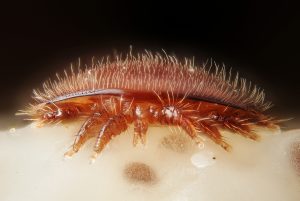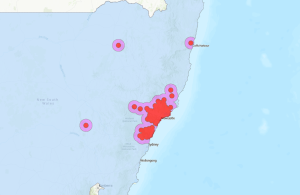Varroa mite detected in central west Australia NSW but honey producers remain confident
/ By Hugh Hogan, Hamish Cole, Alex James, and Kim Honan

Australia was the last major honey producing country to be free of the pest before the outbreak. ShareAlike 2.0 Generic (CC BY-SA 2.0)
An invasive parasite deadly to bees has been detected in central west NSW for the first time.
Key points:
- Varroa mite has been detected at Gumble near Molong, with 23 hives already destroyed
- The hives were legally moved to the area from Sackville North in Sydney and traced to the area as part of the ongoing containment effort
- Local beekeepers remain confident the outbreak can be contained
The Department of Primary Industries has euthanized 23 hives at Gumble near Molong that tested positive to varroa mite after tracing their movement from Sackville North in Sydney.
The department said the movement was legal but was then followed up after a detection in the Sydney region.
The outbreak started at the Port of Newcastle last year and has since been found in almost 200 hives across the Central Coast, Hunter, and Sydney basin.
DPI deputy incident controller Shannon Mulholland said the fact the detection was made so quickly showed the biosecurity measures were working.

The latest detection is the first time varroa mite has been found in the NSW central west. Map can be found at https://www.dpi.nsw.gov.au/emergencies/biosecurity/current-situation/varroa-mite-emergency-response
“The site has already been euthanized so by acting on that quite quickly we were able to get on top that situation and work to further mitigate spread of the mite,” she said.
Australia was previously the only major honey producing country in the world free of the mite before the outbreak in Newcastle.
The pest is known to weaken and kill colonies of honey bees but can also transmit deadly viruses between hives.
In the last 12 months more than 130,000 hives have been tested for the parasite, with more 25,000 destroyed, according to the DPI.
Local producers confident
The central west was previously a blue zone, meaning it was in the general emergency zone but not in any eradication or surveillance areas.
Despite the fresh outbreak, local honey producer John Lockwood remained confident the ongoing incursion could be contained.
“It is slowly spreading through the Central Coast which is a concern, I do believe they have a ring around it which is fantastic that they’ve found the outer edge and have it contained,” he said.
“This one at Gumble is from a legal hive movement and there is very low [numbers of] mite in the colonies so it is just a spot fire I believe.”
However, the president of Crop Pollination Australia Steve Fuller said the detection of varroa mite was “very concerning”.
“The problem is it is blue zone to blue zone [transmission], that is where the industry is really worried,” he said.
“If it was an illegal movement, industry would be a lot happier.”
A 10-kilometre eradication zone has been established around the discovery at Gumble where all hives will be euthanized.
A 25km surveillance zone has also been established where officials will be monitoring both domestic and wild honey bee colonies.
We are here to share current happenings in the bee industry. Bee Culture gathers and shares articles published by outside sources. For more information about this specific article, please visit the original publish source: Varroa mite detected in central west NSW but honey producers remain confident – ABC News








